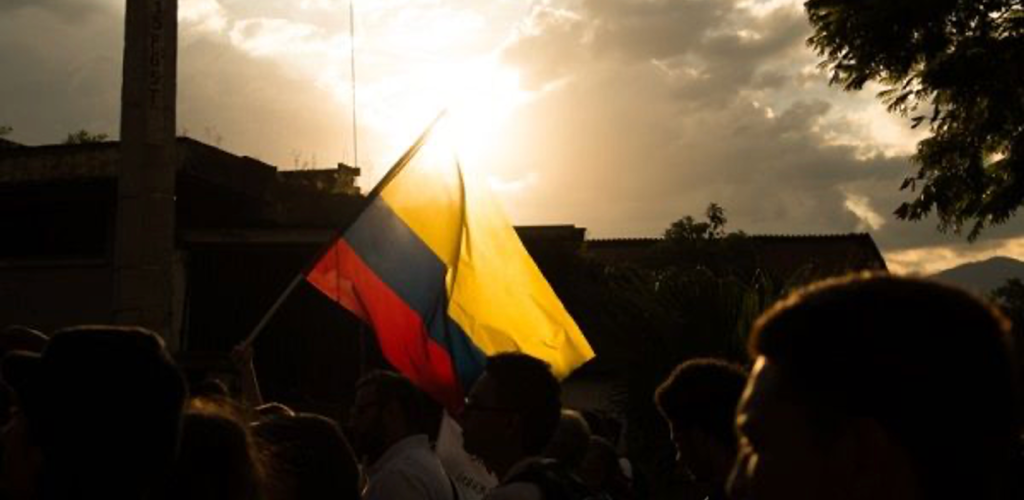Introduction
From 2022 to 2023, I worked for The Organization of American States that deals with peacekeeping and supports the social reintegration process of former combatants in Colombia. I was serving as head of office in Ocaña, Norte de Santander. Our mission was to support peace and monitor the evolving situation in one of the most conflict-affected regions of the country: Catatumbo. While Colombia’s recent government pushed forward the ambitious “Paz Total” policy, a nationwide effort to negotiate peace with all armed actors, the realities on the ground painted a much darker picture. Despite initial progress, the ceasefire agreements quickly crumbled, exposing communities once again to violence, displacement, and instability.
A mission with history
The mission was established in 2000 at the request of the Colombian government, following early peace negotiations with rebel groups. The mission began by observing disarmament efforts, but over the past two decades, its mandate expanded considerably. Today, the organization monitors not only conflict situation but also broader elements of peace implementation, including human rights, environmental concerns, territorial governance, and the impact of tourism on conflict-sensitive regions.
Throughout its 20+ years of presence in Colombia, the mission has worked closely with local communities, civil society, and government institutions, providing independent reports and support for peacebuilding processes. My work in Catatumbo was part of this larger legacy, focused specifically on monitoring the ceasefire and supporting communities caught in the crossfire of ongoing hostilities.
The context of “Paz Total”
When President Gustavo Petro took office in 2022, he launched an ambitious peace agenda under the banner of “Paz Total” (total peace). Unlike previous agreements focused on individual armed groups, this new approach sought to negotiate simultaneously with all guerrilla and non-state armed actors, including the ELN (Ejército de Liberación Nacional), Fuerzas Armadas Revolucionarias de Colombia (FARC) dissident groups, and organized criminal structures.
Petro’s vision aimed at addressing the structural roots of violence in Colombia: inequality, land ownership, and political exclusion. However, the complexity of dealing with fragmented and often competing armed groups presented immediate challenges. Unlike the 2016 peace agreement with the FARC, signed under the previous administration, many of these actors lacked unified leadership or clear political agendas.
Catatumbo
Catatumbo, a region in northeast Colombia bordering Venezuela, is one of the most militarized and contested territories in the country. Rich in natural resources but historically neglected by the state, it has become a strategic area for drug trafficking, illegal mining, and armed control.
During my time in Ocaña, we monitored the ceasefire agreements signed between the government and ELN and FARC dissident factions. The agreements included commitments to stop armed confrontations, halt territorial expansion, and protect civilians. However, within just seven months, the ceasefires collapsed. Armed clashes resumed, and civilian displacement surged. Entire communities were forced to flee due to the renewed fighting. The humanitarian toll was immediate and severe.
As a special observer, we worked alongside local leaders, civil society organizations, and international actors to report violations, assess the humanitarian situation, and support the protection of human rights defenders. One of the most tragic aspects of the collapse was the erosion of hope among communities who had believed that peace might finally be within reach.
Why the ceasefire failed
Several factors contributed to the failure of the ceasefire in Catatumbo:
Lack of trust: Many communities remained skeptical of both the government and armed groups. The historical failure of the 2016 agreement, where ex-combatants rearmed, created deep distrust.
Fragmented armed actors: The ELN and FARC dissidents are not cohesive structures. Local commanders often act autonomously, making centralized negotiations difficult to enforce.
Territorial competition: Armed groups continued to fight for control of routes and resources, even during the ceasefire period. These underlying economic incentives were never fully addressed.
Weak state presence: The state’s inability to fill the vacuum left by demobilized groups allowed violence to return rapidly. Social services, security, and justice systems were often absent.
The breakdown of the ceasefire led to increased violence, forced displacement, and civilian casualties. According to local estimates, dozens of people were killed in the months following the collapse, including members of the armed forces, rebel groups, and civilians. Families were uprooted, schools were closed, and the fragile social fabric of communities was torn apart.
In many areas of Catatumbo, community leaders and activists were particularly vulnerable. We documented threats, intimidation, and targeted killings, patterns that have become tragically common in Colombia’s rural zones.
Unfortunately, despite our best efforts, some goals remained unfulfilled. Armed clashes continued. People, whether members of the military, ex-combatants, or civilians continued to lose their lives. It was deeply frustrating and painful to witness these losses.
I carry with me the weight of what we could not accomplish, but also the conviction that the work mattered — that bearing witness, fostering dialogue, and supporting peace, even in the most difficult circumstances, is essential.
Conclusion
Colombia’s road to peace is long and winding. While the international community rightly celebrated the 2016 peace agreement, the situation in places like Catatumbo shows that the work is far from over. As violence persists, civilians pay the highest price. The international community, the Colombian government, and civil society must remain committed—not just to negotiating peace, but to building it brick by brick, in every corner of the country.

